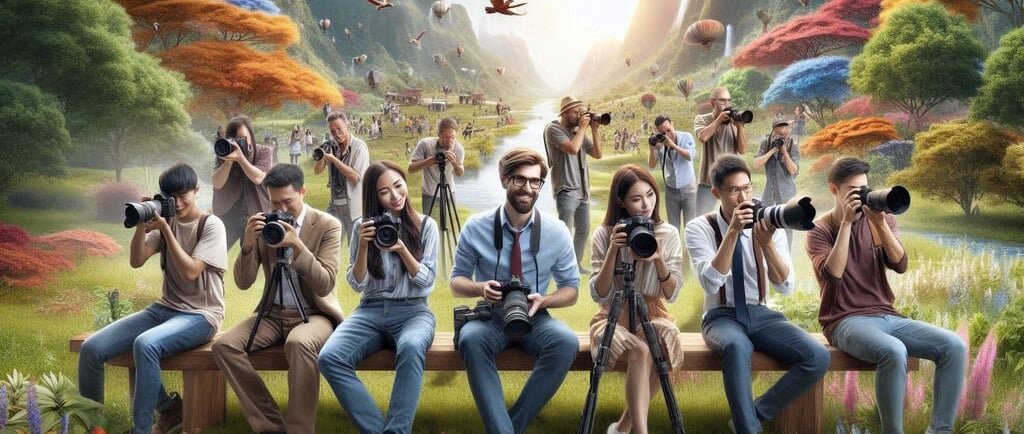Let us collaborate to foster global growth and development together.
Professional Photography and Videography
Elevate your brand with professional photography and videography. Learn expert techniques, equipment tips, and strategies for creating stunning visuals.
10/10/20073 min read
Elevate your brand with professional photography and videography. Learn expert techniques, equipment tips, and strategies for creating stunning visuals.
Professional Photography and Videography: Capturing Moments with Excellence
In today’s visually driven world, professional photography and videography have become essential for businesses, influencers, and creatives alike. Whether you’re looking to enhance your brand, create compelling content, or simply capture unforgettable moments, mastering these visual arts is key. Let’s dive into the fundamentals, best practices, and industry trends that can elevate your skills.
Why Professional Photography and Videography Matter
High-quality visuals can make or break a brand’s image. With the rise of social media and digital marketing, professional photography and videography help businesses:
Enhance brand identity – High-resolution images and videos create a polished and trustworthy brand presence.
Boost engagement – Compelling visuals attract more likes, shares, and comments on social platforms.
Increase conversion rates – Product videos and professional photos enhance customer confidence and drive sales.
Key Differences Between Photography and Videography
While both mediums aim to tell a story, they require different skills and approaches:
Photography captures a single moment in time, emphasizing composition, lighting, and detail.
Videography involves motion, sound, and editing techniques to create a dynamic narrative.
Understanding these distinctions allows professionals to tailor their skills for different projects, whether it's a product shoot, wedding coverage, or cinematic storytelling.
Essential Equipment for Professional Photography and Videography
Investing in the right tools is crucial for achieving high-quality results. Here’s a breakdown of must-have equipment:
Cameras
DSLR & Mirrorless Cameras – Offer high-resolution images and video recording capabilities.
Cinema Cameras – Ideal for professional filmmaking and high-end videography.
Lenses
Prime Lenses – Provide sharp images with a fixed focal length.
Zoom Lenses – Offer flexibility for various shooting scenarios.
Wide-Angle Lenses – Best for landscapes and architectural photography.
Telephoto Lenses – Perfect for portraits and sports photography.
Lighting Gear
Softboxes & Umbrellas – Diffuse light for a natural look.
LED Panels – Provide continuous lighting for videography.
Reflectors – Enhance natural light and fill shadows.
Stabilization Tools
Tripods & Monopods – Ensure steady shots.
Gimbals – Allow smooth camera movements for cinematic footage.
Sliders – Create seamless tracking shots.
Editing Software
Adobe Lightroom & Photoshop – Essential for photo editing and retouching.
Adobe Premiere Pro & Final Cut Pro – Industry-standard video editing software.
DaVinci Resolve – Ideal for color grading and professional editing.
Techniques for Capturing Stunning Photography and Videography
Mastering Composition
Rule of Thirds – Divide your frame into thirds for balanced compositions.
Leading Lines – Use natural lines to draw the viewer’s eye to the subject.
Framing – Use objects within the scene to create a frame around the subject.
Lighting Tips
Golden Hour – The soft, warm light during sunrise and sunset creates beautiful images.
Three-Point Lighting – A professional setup that includes key light, fill light, and backlight for depth.
Natural vs. Artificial Light – Understand when to use each to enhance the mood of your shots.
Video Storytelling Techniques
Plan Your Shots – Storyboard your scenes for a smooth narrative flow.
Use B-Roll Footage – Supplement your main shots with secondary footage for better storytelling.
Incorporate Motion – Utilize slow motion, time-lapse, and smooth camera movements to add cinematic appeal.
Industry Trends in Professional Photography and Videography
Staying updated with the latest trends helps professionals remain competitive in the industry. Here are some key developments:
Drone Photography & Videography – Aerial shots add a new perspective to visuals.
360-Degree & VR Content – Interactive experiences are gaining popularity in marketing.
AI-Powered Editing – Artificial intelligence is streamlining the editing process.
Live Streaming & Short-Form Video – Social media platforms favor real-time and engaging content.
Monetizing Your Photography and Videography Skills
Turning your passion into a profitable career is possible with the right strategies:
Freelancing & Client Work
Offer services for weddings, events, and commercial shoots.
Build an online portfolio to showcase your work.
Stock Photography & Videography
Sell your visuals on platforms like Shutterstock, Adobe Stock, and Getty Images.
Create niche content that brands and marketers look for.
Social Media & Content Creation
Build a personal brand through Instagram, YouTube, or TikTok.
Offer online courses and tutorials to teach aspiring photographers and videographers.
Final Thoughts
Mastering professional photography and videography requires dedication, the right equipment, and a strong understanding of storytelling techniques. Whether you're an aspiring photographer, content creator, or business owner, investing in visual content can elevate your brand and unlock new opportunities.
Are you ready to take your photography and videography skills to the next level? Share your experiences or ask questions in the comments below!


Innovation
Cutting-edge solutions for industrial efficiency and productivity.
© 2024. All rights reserved.


